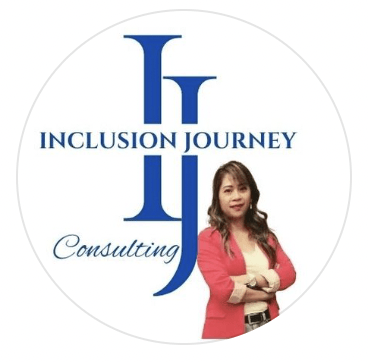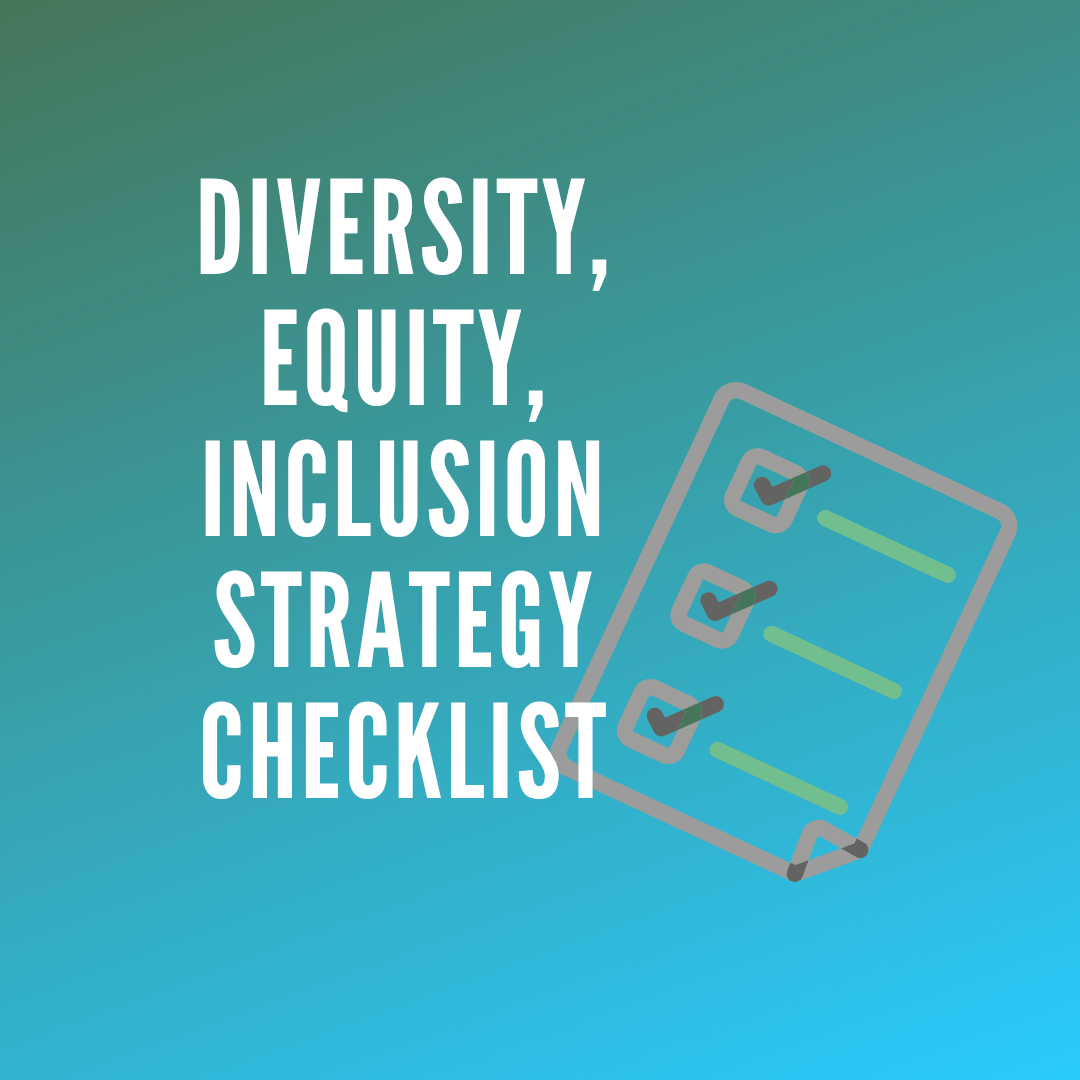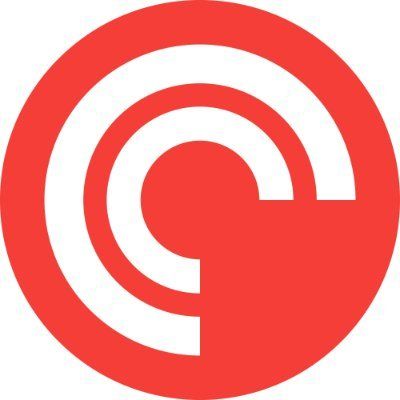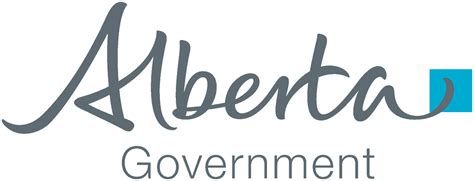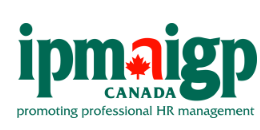FREE DEI RESOURCES
Blogs / ARTICLES
Webinars
Blogs/ Articles

Diversity, equity, and inclusion (DEI) training is a critical component of fostering a workplace culture that celebrates diversity, ensures fairness, and promotes inclusion. Leaders play a crucial role in driving DEI initiatives within organizations. By implementing comprehensive DEI training programs, leaders can equip themselves and their teams with the knowledge, skills, and understanding necessary to create an inclusive and thriving work environment. This article will explore a list of DEI training strategies leaders can implement to cultivate a diversity, equity, and inclusion culture. 1. Unconscious Bias Training Unconscious biases are ingrained stereotypes and attitudes that influence our perceptions, decisions, and behaviors. Unconscious bias training raises awareness about these biases and provides tools to challenge and mitigate their impact. By understanding and addressing unconscious biases, leaders can make more objective and inclusive decisions and create a level playing field for all employees. 2. Cultural Competency Training Cultural competency training enhances leaders' understanding of different cultures, customs, and perspectives. It promotes empathy, respect, and effective communication across diverse teams. By developing cultural competency, leaders can foster an inclusive environment where individuals from different backgrounds feel valued, understood, and empowered to contribute their unique perspectives. 3. Inclusive Leadership Training Inclusive leadership training equips leaders with the skills to create an inclusive workplace culture. It focuses on building awareness of inclusive behaviors, fostering allyship, and promoting equitable opportunities for all employees. Inclusive leaders actively listen, value diverse perspectives, and empower their teams, thereby driving innovation, engagement, and productivity. 4. LGBTQ+ Inclusion Training LGBTQ+ inclusion training educates leaders on the challenges faced by LGBTQ+ individuals and provides strategies to create an inclusive environment. It covers topics such as LGBTQ+ terminology, pronoun usage, legal considerations, and promoting LGBTQ+ employee resource groups. By fostering LGBTQ+ inclusion, leaders demonstrate their commitment to creating a safe and supportive workplace for all employees. 5. Disability Awareness and Accessibility Training Disability awareness and accessibility training increase leaders' understanding of disabilities and the importance of accessibility. It covers topics such as reasonable accommodations, inclusive communication, and creating an accessible physical and digital environment. By ensuring inclusivity for employees with disabilities, leaders can unlock the potential of a diverse talent pool and create a truly inclusive organization. 6. Anti-Harassment and Anti-Discrimination Training Anti-harassment and anti-discrimination training provide leaders with the tools to prevent, recognize, and address inappropriate behaviors. It educates leaders on legal obligations, company policies, and procedures related to harassment and discrimination. By promoting a zero-tolerance culture and equipping leaders to respond effectively to incidents, organizations can create a safe and respectful workplace for all employees. 7. Inclusive Hiring for Managers/ Supervisors Effective and inclusive hiring practices are essential for organizations to foster diversity and create equitable opportunities. In this training, managers and supervisors will learn how to implement inclusive hiring strategies to attract diverse talent, mitigate unconscious biases, and create an inclusive candidate experience. Gain the skills and knowledge to develop inclusive job descriptions, recognize and address unconscious biases in the hiring process, and create a welcoming and fair candidate evaluation process. By mastering inclusive hiring practices, managers and supervisors can contribute to building diverse and high-performing teams that drive innovation and success. 8. Mentorship Program: Cultivating Inclusive Leadership This comprehensive training introduces leaders to the power of mentorship in fostering diversity, equity, and inclusion within organizations. Participants will learn how to establish and facilitate successful mentorship programs that provide valuable support, guidance, and opportunities for growth to employees from underrepresented groups. Gain the skills to create a mentorship framework, match mentors and mentees effectively, establish open communication channels, provide mentorship training, and measure program success. By incorporating a mentorship program, leaders can create a supportive and inclusive environment where individuals from diverse backgrounds thrive and excel. 9. Antiracism Training: Fostering Inclusive Organizations This transformative training program equips leaders with the knowledge and skills to actively challenge racism and promote racial equity within their organizations. Participants will explore the historical and social contexts of racism, examine unconscious biases, and learn strategies to cultivate inclusive practices that combat systemic racism. By engaging in this training, leaders will develop the tools to be effective allies and advocates for marginalized communities, fostering an environment where diversity is celebrated, and everyone feels valued and included. Note: Antiracism training should be approached with sensitivity and care. Organizations are encouraged to seek experienced facilitators or consultants specializing in antiracism training to ensure a safe and constructive learning environment. 10. Cultivating Compassionate Leadership: Empathy Development Program This transformative training program empowers leaders to develop and enhance their empathy skills, enabling them to connect with their teams on a deeper level and create a more inclusive work environment. Participants will learn the importance of empathy in building trust, resolving conflicts, and driving collaboration. Through interactive exercises and practical strategies, leaders will gain the tools to actively listen, understand diverse perspectives, and demonstrate empathy in their leadership practices. By fostering empathy, leaders can create a compassionate workplace culture that values their team members' well-being and diverse experiences. Comprehensive DEI training is a vital investment for leaders seeking to create inclusive and equitable organizations. By implementing these training strategies, leaders can foster a workplace culture that embraces diversity, ensures fairness, and empowers all employees to reach their full potential. Remember, DEI training is an ongoing process and should be complemented by consistent reinforcement and accountability. Together, let us embrace the power of DEI training and build organizations that celebrate diversity and drive positive change. Organizations should consider working with experienced DEI trainers or consultants to tailor these training strategies to their specific needs and ensure maximum effectiveness. If you're ready to embark on the journey of implementing comprehensive DEI training within your organization, I invite you to reach out. As an experienced DEI consultant, I can provide guidance, resources, and customized training programs tailored to your organization's unique needs. Let's work together to create an inclusive and thriving workplace where every individual feels valued, respected, and empowered to succeed. Let's connect and start building a more diverse, equitable, and inclusive future. Email: maria@theinclusionjourney.com OR Schedule a complimentary Workplace Transformation Strategy Call.
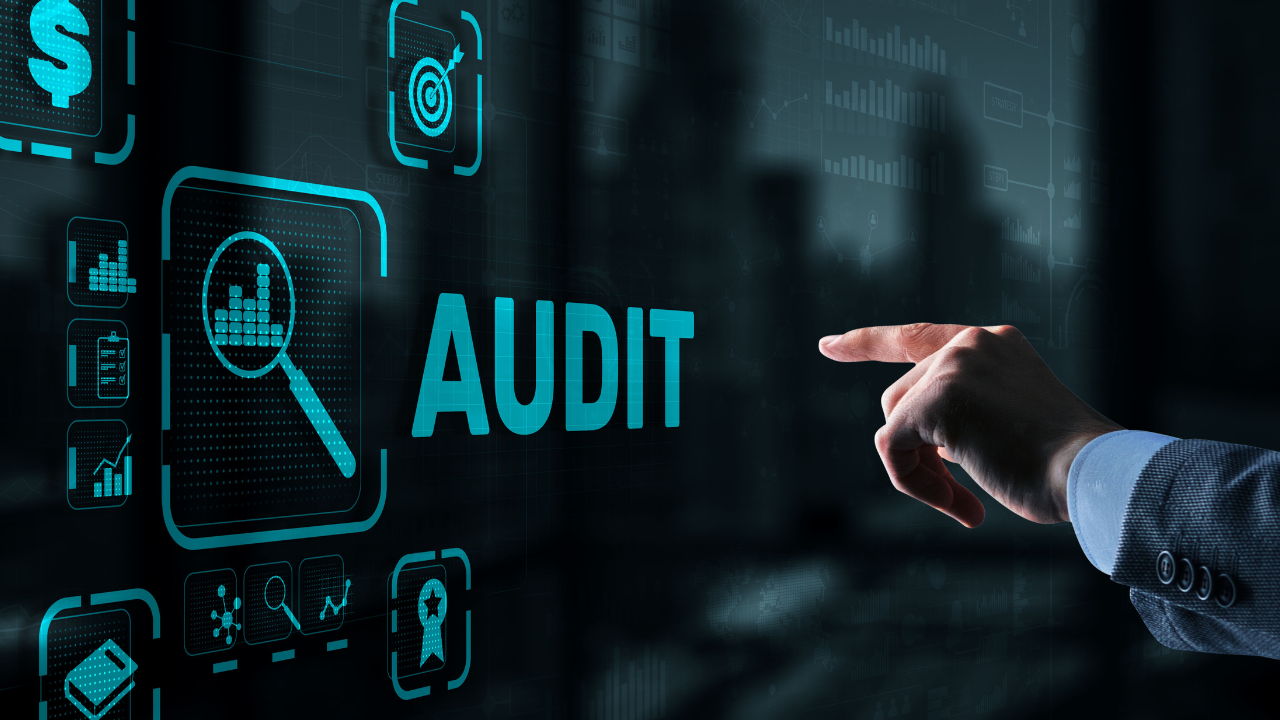
Conducting a DEI audit is crucial for organizations fostering diversity, equity, and inclusion. However, it’s essential to be aware of common missteps that can hinder the effectiveness of your audit process. This article highlights seven key areas where you may be going wrong and provides insights on how to course-correct. Superficial Metrics vs. Comprehensive Assessment: Relying solely on surface-level metrics can lead to a lack of understanding of the actual state of diversity and inclusion within the organization. Without a deeper understanding of the experiences and inclusivity within the organization, efforts to address underlying issues may be misguided. This can result in a superficial approach that fails to create meaningful change. 2. Overlooking Intersectionality: Neglecting to consider intersectionality limits the scope of your DEI audit and fails to address the unique challenges faced by individuals with multiple dimensions of diversity. By overlooking intersectionality, i.e., focusing on race and gender only, organizations risk creating an incomplete picture of their diversity landscape, resulting in inadequate strategies that do not effectively address the complex interactions of different identity markers and their impact on inclusion and equity. Intersectionality acknowledges the interconnected nature of various identities, such as age, disability, sexual orientation, and socioeconomic background. By incorporating intersectionality into audits, organizations can uncover nuanced challenges and develop inclusive strategies that address the unique needs of individuals with multiple dimensions of diversity. 3. Falling Into Tokenism: Merely showcasing diversity without fostering inclusion and equity can lead to tokenism. Tokenism undermines the credibility of DEI efforts and can create a culture of resentment and disengagement among employees. It hampers establishing a genuinely inclusive environment where individuals feel valued for their contributions rather than their identities. 4. Neglecting Employee Feedback: Ignoring valuable employee feedback and insights limits the effectiveness of your DEI audit. By disregarding employee perspectives, organizations miss out on critical information that can shed light on systemic barriers and areas for improvement. This can result in a disconnect between the intended goals of DEI initiatives and the actual experiences of employees. Organizations gain diverse perspectives by actively involving employees in the DEI audit process, identifying systemic barriers, and developing targeted solutions. Employee feedback serves as a compass, guiding the organization toward meaningful and impactful change. 5. Lack of Accountability: Failing to establish clear accountability mechanisms undermines the progress made through the DEI audit. Organizations may struggle to translate audit findings into tangible actions without clear responsibilities and metrics. This can lead to a lack of progress, as there is no framework to ensure that individuals and departments are actively working towards DEI goals. By assigning responsibilities, setting measurable goals, and implementing regular progress assessments, organizations ensure that DEI efforts are actively pursued and integrated into the fabric of the organization. 6. Ignoring Ongoing Evaluation: Treating the DEI audit as a one-time event limits the ability to drive sustained change. Without ongoing evaluation, organizations cannot track progress, identify emerging challenges, or adjust strategies accordingly. This can result in stagnation, where DEI efforts become stagnant and fail to adapt to changing dynamics and needs within the organization. By integrating evaluation as a continuous process, organizations ensure that DEI efforts remain dynamic and responsive to evolving needs and priorities. 7. Absence of Leadership Commitment: Lack of genuine leadership commitment hinders the success of DEI initiatives. When leaders do not actively champion diversity, equity, and inclusion, their actions (or inaction) can create a culture where DEI efforts are not prioritized. This can lead to a lack of employee buy-in, making it challenging to create meaningful change and sustain progress over time. However, when leaders actively champion these values, they inspire employees, drive organizational change, and establish a strong foundation for sustained progress. Navigating DEI audits requires a thoughtful and comprehensive approach to drive meaningful organizational change. By avoiding these seven common missteps, organizations can experience the following benefits: Pave a more inclusive path to success. Fosters diversity, equity, and inclusion. Significant cost savings associated with doing the audit correctly. Now is the time to prioritize DEI and take the necessary steps to conduct the audit the right way. By investing in a thorough and inclusive process, organizations can unlock the full potential of their workforce, enhance employee satisfaction, and drive innovation. *********************************************************************************************************** If you need assistance with your DEI audit or want to ensure you’re on the right track, we’re here to help. We’re ready to provide guidance, support, and tailored solutions to meet your organization’s specific needs. Contact Maria at maria@theinclusionjourney.com to learn more about how we can assist you in conducting your DEI audit the right way.

Welcome to our exclusive interview with Dr. Bernard Esquivel, a remarkable clinician, clinical immunologist, and medical doctor making waves in the world of healthcare. With his diverse background and extensive experience, Dr. Esquivel is passionate about innovation and ethical practices in healthcare. In this article, we delve into his journey, his challenges, and his unwavering commitment to prioritizing patient care. Dr. Esquivel's journey has been marked by his relentless pursuit of knowledge and skills beyond his clinical expertise. He recognized the need for a diverse skill set, so he ventured into business administration and health management, understanding the importance of driving business in healthcare. As an executive leader, Dr. Esquivel emphasizes the significance of continuously developing human skills to navigate the complexities of the industry successfully. His accomplishments speak volumes about his dedication and commitment to making a difference. Currently serving as the Chief Medical Officer of Gen Xys, a leading prescribing organization, and as a Senior Medical Advisor for Harrison Healthcare, a prestigious wellness center, Dr. Esquivel plays a pivotal role in shaping the future of healthcare. Additionally, he holds the position of Head of Clinical Innovation at ixLayer, a digital health company focused on health tech in the United States. Dr. Esquivel contributes to spearheading innovative solutions and integrating them into the healthcare landscape through these roles. Putting patients first is a core principle for Dr. Esquivel. He firmly believes every healthcare decision should revolve around the patient's well-being. Dr. Esquivel emphasizes the importance of basing actions on scientific evidence and ensuring regulatory compliance. He says creating a compelling value proposition involves aligning these elements with a well-executed go-to-market strategy. Ethical business practices and accountability are crucial in healthcare, as they determine how a product or service can improve lives. Regarding ethical business practices, Dr. Esquivel emphasizes that responsible and accountable behavior should be the foundation of all endeavors. While business considerations are important, they should always take a back seat to fulfilling a need and providing evidence-based, safe, and effective solutions. The healthcare industry deals with people's lives, and the responsibility to the patient must always be upheld. Reflecting on his challenges, Dr. Esquivel acknowledges battling self-doubt, embracing new knowledge, seizing opportunities, and fostering a diverse skill set. As an immigrant, his story is a testament to the belief that with self-confidence, anything is achievable. As a leader, Dr. Esquivel understands the importance of effective people management and building a strong, cross-sectional team. By surrounding himself with talented individuals who bring unique perspectives, he ensures better business decisions and fosters innovation. In his current roles, Dr. Esquivel manages teams, collaborates with stakeholders, and drives innovation. He highlights the significance of artificial intelligence (AI) and research and development in shaping the future of healthcare. He navigates the complex healthcare landscape by blending clinical expertise with business acumen and collaborating with various teams. Dr. Esquivel's responsible implementation of AI in healthcare and dedication to patient-centric care and regulatory compliance make him a leader in the field. Dr. Esquivel has shown a commitment to learning and personal growth throughout his career. By expanding his skill set beyond clinical expertise, he has become a well-rounded executive capable of driving positive change in the healthcare industry. His ability to foster collaboration and build strong relationships with diverse stakeholders is commendable. Valuing the contributions of others and promoting open communication, he creates an environment where innovative ideas can flourish. Dr. Esquivel's emphasis on patient well-being and ethical business practices sets a standard for healthcare professionals worldwide. By prioritizing evidence-based solutions and regulatory compliance, he ensures that the products and services offered by the organizations he works with are safe, effective, and aligned with best practices. As an advocate for responsible AI implementation in healthcare, Dr. Esquivel is at the forefront of the industry's transformation. His involvement in cutting-edge research and AI initiatives at Harvard showcases his commitment to ethical standards and leveraging technology for positive change. Dr. Bernard Esquivel's journey as a clinician, executive leader, and ethical healthcare advocate is remarkable. His dedication to patient-centric care, continuous learning, and responsible innovation sets a standard for healthcare professionals worldwide. Driven by a deep sense of purpose and an unwavering commitment to improving healthcare systems, Dr. Esquivel is impacting the industry. His contributions will continue to shape the future of healthcare, ensuring that patients receive the highest quality of care in an ethically driven and technologically advanced environment. In conclusion, the insights and experiences shared by Dr. Esquivel illuminate the path to successful leadership and highlight the importance of diversity, equity, inclusion, and sustainability in our organizations. By implementing his advice and adopting his strategies, we can create positive change and foster inclusive environments that drive growth and innovation. I hope you found this blog post valuable and inspiring. If you would like to explore more articles and resources or engage in further discussions on leadership, diversity, equity, inclusion, or sustainable practices, I invite you to connect with me. Together, let's create a brighter future for healthcare. About the Author: Maria Drueco is a passionate advocate for inclusive leadership, equitable and sustainable practices. With a background in talent management and diversity, equity, and inclusion work, Maria has dedicated her career to empowering individuals and organizations to embrace diversity, foster inclusive cultures, and drive positive impact. Through insightful interviews, articles, and speaking engagements, Maria strives to inspire leaders to create positive change in their workplaces and beyond. To learn more about Maria Drueco's work, connect on LinkedIn or visit www.theinclusionjourney.com

Are you a hiring manager in the manufacturing industry looking for ways to make the recruitment process easier and more efficient? If so, you may consider utilizing an external recruiter's services. In this blog post, we will discuss how working with an external recruiter can help streamline the recruitment process for hiring managers in the manufacturing industry. We will explore the benefits of working with an outside recruiter and provide tips on how to get the most out of this partnership. By the end of this article, you should have a better understanding of how outside recruiters can help streamline the recruitment process and why it's worth considering. Benefits of Working with an External Recruiter An external recruiter can provide many benefits to any hiring manager in the manufacturing industry. First and foremost, they can save you a great deal of time. Instead of having to do the legwork of searching for and interviewing potential candidates, an outside recruiter can handle these tasks for you. This means you can focus on other essential recruitment aspects such as hiring decisions, onboarding, and other administrative tasks . Another benefit of working with an external recruiter is that they have a more expansive network. An external recruiter has access to a larger pool of potential candidates than you may have access to with your internal resources. Since they specialize in the manufacturing industry, they can reach out to an extensive network of passive and active job seekers and connect them with the right opportunity. This means that you can cast a wider net and have a better chance of finding the right person for the job. Additionally, external recruiters often have specialized sourcing tools, interviewing, and market research skills that can be highly beneficial to the hiring process. Finally, external recruiters can provide valuable insights into the job market that you may not have access to otherwise. They can provide valuable information about salaries, trends, and potential candidates you may not have considered. This can help you make informed decisions and offer competitive salaries and benefits packages to potential new employees. By working with an external recruiter, you can streamline the recruitment process and ultimately, find the suitable candidates for the job. Tips for Utilizing an Outside Recruiter One of the main benefits of working with an external recruiter is their ability to access a larger pool of potential candidates. An external recruiter can also offer valuable insights into the industry's job market trends and recommend the best strategies to make your recruitment process more efficient. In addition to their expansive network of potential candidates, external recruiters have a variety of resources at their disposal that can streamline the recruitment process. They can use sourcing tools to quickly identify and reach out to qualified candidates and utilize analytics to monitor the effectiveness of your recruitment efforts. By leveraging these resources, an external recruiter can help you quickly fill positions with the most suitable candidates. Making the Most of an Outside Recruiter Partnership For any hiring manager in the manufacturing industry, working with an external recruiter can be a valuable asset. To get the most out of the partnership, here are some guidelines: It is crucial to establish a clear understanding of the goals for the hiring process and to create a timeline for when the position should be filled. You must provide the recruiter with clear information about the job, the team, the culture within the organization, your leadership style Regularly communicate with the recruiter throughout the recruitment process. Timely responses and feedback will help meet your recruitment timeline. With these guidelines, you can ensure that you'll get the best candidates for your open positions in the most efficient manner possible. In conclusion, external recruiters can provide a wealth of knowledge and resources to help streamline the recruitment process for hiring managers in the manufacturing industry. Recruiters are knowledgeable about the latest trends in the industry and have access to a network of potential candidates. This can be highly beneficial for a hiring manager who is short on time and resources. Working with an external recruiter can efficiently find the right candidate for a particular position quickly and with minimal effort.

The workforce is increasingly becoming diverse. One doesn’t have to work outside your home country to experience the rich diversity of the work environment. No wonder that diversity hiring is a hot topic these days. Organizations are realizing that there are many benefits to hiring people who have a variety of backgrounds and abilities. Despite this, there are still groups of people who have been consistently passed over when it comes to opportunities. Companies need to be inclusive of these individuals, as they are often overlooked in hiring practices. This inclusivity is often said to be important for many different reasons, such as reducing turnover, attracting top talent, and reducing the risk of litigation. Let’s look at how to develop inclusive hiring practices. Inclusion is more about who you are, rather than what you do. It is about hiring and retaining people who bring fresh ideas, skills, and perspectives to the table. If you think about it, it isn't that different from how you hire for your team. You look for people who can bring something new to the team, rather than someone who is exactly like you. But then it isn’t easy as it seems. As humans, bias is built in our way of thinking. It is not surprising therefore to see that the organization has built-in biases in their systems, practices, and policies created by their people. Hiring team members with diverse experiences, competencies, and background is key and requires deliberate and conscious efforts on the part of the organization’s leaders. It’s now looking beyond hiring from a diverse pool of candidates. Here are 3 strategies on how to improve your hiring practices to make them more inclusive: 1. Have a strategic approach The organization’s recruitment/ talent acquisition strategy should embed diversity, equity, and inclusion practices. This requires having a DEI strategy that is aligned with your recruitment strategy. It is important to note that these 2 strategies should not be separated from each other as any comprehensive DEI strategy should be embedded in all the business functions and areas of the organization. A key question to ask: “Does my organization’s DEI strategy include recruitment metrics that are realistic, achievable, and aligned with the overall business strategy?” Examples of important metrics to include: - Workforce Representation - Internal Talent Mobility - Employee engagement scores - Retention rate - Number of DEI training delivered for hiring managers and HR staff - Compensation 2. Have an inclusive hiring approach To increase the diversity of hires, HR and hiring managers need to focus, not just on simply sourcing from a more varied candidate pool but also looking at the candidate experience of the people from the underrepresented groups. Candidates from the BIPOC group (Black, Indigenous, Person of color) and people with disabilities deal with barriers that might hinder them from applying for a job in the organization. One strategic approach would be to look at the full talent acquisition/ recruitment process from end to end to identify and break down these concealed barriers. Typically, candidates experience roadblocks in each of the areas in the recruitment/ talent acquisition cycle. A. Job Requirements/job description Specifying requirements based upon work results/ outcomes gets rid of the requirement for applicants to have qualifications that might not be required on the job. Doing this will expand the candidate pool to individuals from diverse and non-traditional backgrounds who are likewise effective in being successful in the role. The job description can also be made more inclusive by playing down the requirement for specific previous qualifications such as specific degrees or work history. As mentioned above, describing the work outcomes instead of recommending the credentials required to do a job will provide more flexibility in looking at transferable skills and will be more inviting for job candidates to submit their applications if they know that their skills and competencies in their current role will be considered in the application. This is a more inclusive practice than counting on previous experience alone. B. Job ad/ job sourcing Hiring leaders should likewise look at the way the job ad keeps qualified candidates of diverse backgrounds from applying. Avoid using biased language in the job ad that might inadvertently prevent women, racial minorities, and individuals with physical disabilities. Some organizations use language processing software to examine job descriptions for any biased language. If a software is not available, do the intentional route of examining your job ad meticulously for use of gender-neutral titles, using s/he pronouns or you when describing job tasks, avoiding the use of superlatives, focusing on the “must-haves”, eliminating “nice to haves” and avoiding the use of gender-charged words. Some tools can help identify problem spots in your word choices such as Texio and the free tool, Gender Decoder . Include a "reasonable accommodation statement" in your job ad. Employers should strive to provide reasonable accommodations to candidates who require them. Candidates who have mobility, hearing, or vision needs will require accommodations for their interview process, work with them and listen to their needs. Expand your reach by ensuring that you’re job ad is seen and can be accessed by diverse groups of people. Nowadays, organizations have various options when posting their ads, such as job boards, educational institutions’ websites, industry association sites, cultural organizations, and social media. These are some of the most effective sites where you can tap into a diverse talent pool. C. Organization messaging When posting a job ad, does it reflect any diversity, equity, and inclusion messages that will give applicants an idea of what your organizational culture looks like? If there is a DEI statement on your website, but nothing is mentioned in your job posting, how will the applicants know what’s like to work in your company? If the job ad doesn’t have a statement like this, start including this now. Applicants do due diligence in researching the companies they would like to apply for after they have seen the job posting. Any inclusive statement showcasing the way you engage and support your current employees will increase the way you’ll attract the right talent to apply for your company. D. Assessment & Selection Are your hiring managers/ recruiters practicing inclusive screening and interviewing? As soon as you begin considering candidates, bias, specifically, gender bias can sneak into the process, starting with your evaluation of résumés. Research studies have revealed, for instance, that candidates whose résumés reflect that they are from traditionally disadvantaged groups are less most likely to be considered for interviews. Acknowledging such patterns is a vital initial step in assisting hiring managers/recruiters when considering applicants impartially. When it comes to assessing an individual, hiring managers/ recruiters should keep an open mind. The fact is that the skills/ abilities that appear perfect for a role today might no longer even be the right fit after a year. Look for ways in your screening and interviewing to check out the abilities that will allow the individual to thrive in an ever-changing work environment. Hiring managers/ recruiters should undergo training on inclusive interviewing techniques. It is also important to provide training to your hiring managers and recruiters on intercultural competency. 3. Train for intercultural competency Recruiting and supporting employees from different cultures involve a range of challenges as well as opportunities. Intercultural competence training increases awareness of different cultural behaviors and how these diverse candidates present themselves during the interview process. By gaining intercultural competence, hiring managers and recruiters will understand how cultural values and behaviors can give an insight into the expectations and motivations of employees from other cultures. A candidate who is a new immigrant from an Asian background may be showing some different communication style in answering interview questions than someone who was born and raised in North America. Recruiters should not assume that because they have presented themselves this way, they are not competent to do the role they have applied for. Hiring managers/ recruiters who have the skill of intercultural competence would be able to minimize bias in the way they screen and assess people from different cultures. For the behavioral interview to work, the hiring managers and recruiters must understand how culture and behaviors come into play, must know cultural agility well, and display it themselves. They need to know what to listen for and what to look for as they assess candidates. Intercultural competence is the bridge between diversity and inclusion. Without intercultural competence, efforts to build a diverse and inclusive workplace can be an arduous struggle. With it, personality and cultural differences are seen as assets that people bring to the organization, and that’s how we can tap into the goldmine of diversity. Inclusive hiring can bring a significant impact on increasing diversity in your organization. These 3 strategies represent the minimum your organization can do to improve diversity and inclusive hiring practices. It is not an exhaustive list. Each organization’s recruitment challenges are unique and would require a strategic approach to address these challenges. As a DEI strategist, this is where I can help you. I offer both audits of the recruitment process and help your hiring manager/ recruiters build inclusive hiring competencies through training and coaching. To schedule the complimentary strategy session, email Maria at maria@theinclusionjourney.com or Click to Book your session. Who is Maria Drueco? Maria Drueco is a Diversity, Equity, and Inclusion (DEI) strategist and a Certified Intercultural Trainer, helping businesses build a healthy and inclusive culture so that they attract diverse talent who possess the right competencies, increase employee engagement and productivity and save on the expensive cost of employee turnover. She is skilled in needs analysis, and DEI audit using different tools to identify organizational gaps. Integrating a DEI lens, she guides leaders in achieving organizational excellence and coaches them on how to lead a diverse team. She has worked with various industries, from medium to large-sized organizations, including the public sector, and coached leaders at all levels: Executives/ Senior Leaders, Managers, and front-line supervisors. Her knowledge of inclusive leadership development, intercultural communication, team alignment, and psychological safety gives her the ability to deliver end-to-end solutions that she applies when she does strategic consulting, coaching, design and delivery of DEI programs. Website: The Inclusion Journey Let’s connect on LinkedIn / Twitter

How Do You Promote Diversity of Thought? Diversity of thought or cognitive diversity refers to differences between team members in characteristics such as values, expertise, experiences, perspectives, and processing styles. It is not predicted by factors such as gender, ethnicity, or age. Recognizing cognitive diversity and leveraging on this brings about innovation and more sense of belonging in the workplace. This is when the concept of inclusion is seen in action. Cognitive diversity is less visible but definitely present in a team A diverse group can be surprisingly similar inside. On the surface, the team might seem to be diverse, but underneath they are very similar so we don't get the full benefit of diversity. This is quite similar to a basket full of Easter eggs with various colors and different designs but in reality, they're all the same! A case study on a group of global CEOs and their international teams who seemed to have problems mostly based on misunderstandings showed that over 90% of the participants had similar profiles and underlying drivers despite the fact the participants came from five different countries. [1] Using the latest tool to assess the dynamics of individual and group mindset as well as understand both personality and cultural differences, they then understood how much the team had in common and how they could make the most of their differences. They all had similar needs and values, and they applied different best practices to meet those needs and achieve those goals. The challenge here is that we may have a diverse team and the above case study showed that relying on just the diversity of the team alone doesn’t encourage and promote diversity of thought. A better approach would be to recognize the individual experiences, values, and thought preferences to tap into the diversity of thoughts within the team. This is when creativity and innovation are unlocked! In the workplace, people might prefer to fit in, so they are cautious in expressing their true opinion or perspectives. If diversity of thought is what we need to succeed in making people think out of the box and be comfortable in dealing with new, uncertain, and complex situations, we need to encourage people to express themselves and apply their different modes of thinking. Leaders need to create a safe space for their team to try things in various ways, removing repercussions when things are done differently from the status quo. This means leaders will have to get much better at building their team’s sense of psychological safety. Aside from building a psychologically safe environment, another important competence to develop is increasing the level of intercultural intelligence (ICQ) within ourselves and within the team. Intercultural Intelligence is key to unlocking diversity of thought Intercultural intelligence (ICQ) is not just about learning about the do’s and don’ts in different cultures but more about understanding ourselves first before trying to understand others. This competence levels up to one's intellectual intelligence (IQ) and emotional intelligence (EQ). Intercultural intelligence is the ability to break down barriers within and between people, because we understand why people think and behave differently depending on their personality type and cultural background. It is about connecting with ourselves first and then with others by learning to see the world from different perspectives. At the team level, intercultural intelligence taps into how the team can leverage their personal and cultural differences. How does having intercultural intelligence promote diversity of thought? Another study showed that on average, 79% of employee performance is lost because of clashing values and personalities combined with poor leadership. All three reasons stem from the same source: a lack of understanding of the blueprint of why people think and behave differently.[2] In today’s fast-moving, complex organizations, 90% of execution is the interaction between people who think and behave differently[3]. The skill to turn those differences into synergy is the key to unlocking diversity of thought. The more we understand why people think and behave differently, the better it is for our business. Here are the benefits of developing intercultural intelligence and how it leads to promoting diversity of thought: 1) Having intercultural intelligence leads to self-awareness If we understand ourselves, we recognize why our values and preferences affect how we behave. Knowing this leads to becoming aware of our cognitive preferences that include how we process new information, how we deal with problems as well as how we react to new and uncomfortable situations. Being aware that we have various preferences can help us deal with previously challenging situations and aid us in identifying the value that comes from working differently. For example, when faced with dealing with a complex problem, we can ask ourselves: - Do I use past experiences to come up with a new solution? OR - Since I know previous experiences wouldn’t help when dealing with this complex problem, I would explore new options only to address this. 2) Having intercultural intelligence leads to acceptance of others by acknowledging that others will have a different way of doing things Other people would prefer to have more information before being asked for an opinion off-hand during a meeting. When faced with a similar situation, do you recognize that this person has a different way of analyzing info and not because they didn’t come prepared for the meeting? You can then ask yourself, what can I do differently next time so I can help them and include them in future conversations. 3) Having intercultural intelligence will give you the ability to improve relationships Intercultural intelligence will improve your ability to communicate effectively since you now understand why people think differently depending on their personality and cultural background. Having ICQ will help you strategize on how to better lead your team because you’d understand their different cognitive preferences, you reduce assumptions and biases and you’d learn how to respond appropriately instead of reacting to a situation. How do we develop intercultural intelligence (ICQ)? Developing ICQ is not just about learning about the statistically average values and beliefs of different countries. It is about having the ability to see a situation from multiple perspectives so we can make better decisions. Here are ways to develop your intercultural intelligence: 1) Lead yourself first before leading others by developing a growth mindset. Having a growth mindset will help one understand the 3 layers of behaviors that drive our values, personality, and the way we respond and make decisions. 2) Build competence by getting to know other behavioral styles and cultural dimensions. Having this knowledge will help you reflect on your behavior and how your behavior influences other people’s perception 3) Be curious about other people’s experiences, backgrounds, and cultures. Get to know your team by sincerely asking questions about them that will widen your worldview. 4) Learn how to communicate effectively across cultures, genders, generations, and with people who have a different view than your own. 5) Develop a more cohesive team by using data from tools that measure cognitive diversity and interaction gaps. Ensure that you are using the latest tool such as Global DISC [4] that would unlock the potential at the individual level and reveal the cognitive diversity index of the team and help develop your intercultural communication skills. How is your team doing when it comes to encouraging diversity of thought? If you want to learn more about how we can unlock the potential of your team, turn diversity into synergy instead of a liability, click on the link to schedule a complimentary consultation with me. About Maria Drueco Maria is a D&I consultant with diverse experience and expertise in HR consulting, HR program content development, facilitation, Business Development, and Sales and Marketing. After more than 15 years of Sales, Marketing, and Business Development experience in the Philippines and in Canada, she then shifted to Human Resources, focusing on developing programs and strategies for inclusive workplace culture, improve personal effectiveness, enhanced employee engagement, and supporting new leaders in the organization. Connect with her on LinkedIn References: - [1] Toth, Csaba, Uncommon Sense in Unusual Times, ICQ Global Ltd., Authorsunite.com, 2020 - [2] Toth, Csaba, Uncommon Sense in Unusual Times, ICQ Global Ltd., Authorsunite.com, 2020 - [3] Toth, Csaba, Uncommon Sense in Unusual Times, ICQ Global Ltd., Authorsunite.com, 2020 - [4] Global DISC is an ICF accredited, multi-award-winning coaching solution for unlocking the potential within and between people by leveraging individual and group mindset. It uses a behavioral model explaining how personality type AND cultural background influence all 3 layers of identity, WHAT, HOW, and WHY we do act, feel and think the way we do. A solution that measures the intercultural gap between individuals, groups, or an individual and a group.
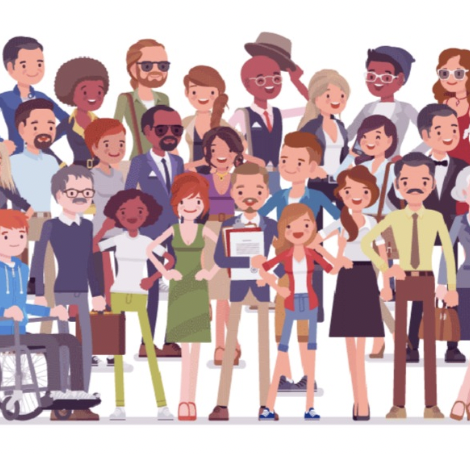
What is diversity in the 21st century? The concept of diversity has been around since time immemorial! The concept turned into an important business case for organizations in the last 20 years given the fact that researches have shown that a diverse organization has a more competitive edge compared to others who were not as diverse. Diversity brought about an increase in creativity, innovation, improved decision making, and had shown the impact on the company's bottom line, such as more profitability and better customer retention. Diversity & inclusion, two powerful concepts that shape the world of work, and often have been confused by some as interchangeable concepts. In this article, let’s focus first on what diversity is and why it matters. In this post, you will get some tips on how to move beyond diversity and leverage it in the workplace. Diversity in the 21st century The traditional understanding of people about diversity is that it’s all about gender, race, and ethnicity. Wellner (2000) conceptualized diversity as representing a multitude of individual differences and similarities that exist among people. Based on this concept, diversity has broadened its scope to include many human characteristics such as nationality, religious background, sexual orientation, age, ability, disability, experience, and diversity of thought. To put the context in the organizational setting, we have to understand that each organization is unique considering the makeup of its people. Thus, it is important to remember that if a company is working on a diversity and inclusion initiative, one of the first important steps is to define what diversity means to their organization. Cognitive Diversity Diversity should not just be considered a numbers game, where companies are doing a check the box exercise to fulfill a ‘target’ number of employing diverse individuals based on the superficial layer of diversity: skin color, gender, race, or even disability. While all of these are important to consider, there’s also the reality that on the surface, your team might look diverse, but if you look at the deeper layer of diversity, the way people think and process information, they could be very similar. This layer of diversity is often overlooked and the organization misses out on the true benefit of what real diversity brings. The Tale of the 6 Blind Men
